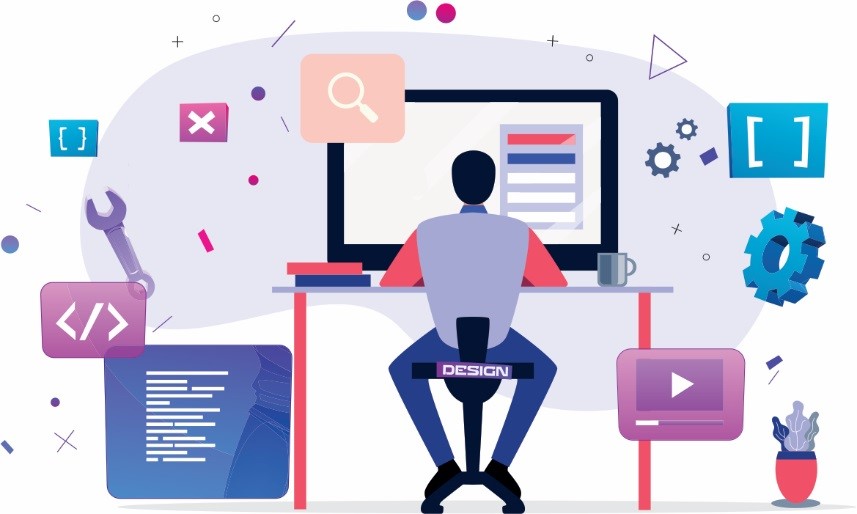Hire Dedicated Developers for Your Following Big Project with Confidence
Wiki Article
Committed Developers vs. In-House Teams: Which Is Right for You?
The choice in between using specialized developers and maintaining an internal team is a considerable one that can impact the trajectory of your projects and general organization strategy. Conversely, internal groups add to a cohesive firm culture and a nuanced understanding of lasting goals.Understanding Dedicated Designers
The growing need for specialized abilities in the tech sector has resulted in the emergence of dedicated developers as a viable remedy for lots of companies. These specialists are usually acquired on a task basis, permitting companies to leverage particular knowledge without the long-term commitment linked with full time hires. Devoted programmers are typically ingrained within a customer's group, offering adaptability and scalability to meet job needs.This version allows organizations to access an international talent pool, which is specifically advantageous in a quickly advancing technical landscape. Committed developers can be sourced from numerous geographical locations, ensuring that companies can discover the right skill established at competitive prices. They typically bring a wealth of experience and understanding, having actually worked with diverse tasks across various sectors.
Furthermore, dedicated developers can focus exclusively on the jobs available, enhancing productivity and performance. They are furnished to integrate perfectly right into existing operations, teaming up closely with in-house groups to achieve task goals. This strategy not only minimizes the problem of recruitment and training however likewise enables organizations to remain active, adapting quickly to changing market needs and technical advancements.
Advantages of In-House Teams

Furthermore, in-house teams often tend to have a deeper understanding of the business's mission, worths, and objectives. This positioning can boost worker interaction and inspiration, as staff member really feel extra attached to their job and the organization's success. Furthermore, having a committed internal group permits much better placement of goals and approaches, as these members are continually concentrated on the company's concerns.
In-house teams likewise promote quicker decision-making processes, as they can react much more quickly to modifications and challenges. The recognized connections and familiarity with firm procedures permit for structured workflows and reduced miscommunication. Eventually, the mix of a cohesive society, placement with organizational goals, and efficient interaction makes internal teams a beneficial possession for many organizations, specifically those aiming to grow lasting development and technology.
Expense Considerations
When examining cost considerations, both dedicated programmers and internal groups present distinct financial effects for companies. Engaging dedicated developers generally involves a pay-per-project or hourly price design, which can be cost-efficient for businesses with varying job demands. This strategy permits flexibility in scaling sources up or down, ensuring that business just pay for the solutions they need.On the other hand, in-house groups require repaired expenses, consisting of salaries, benefits, and overhead costs such as workplace and equipment. While this design supplies greater control and instant availability of resources, it may cause greater long-term expenses, particularly if the work does not validate a full time staff.
In addition, companies should take into consideration the covert prices connected with recruitment and training of in-house staff members, which can additionally stress budget plans. Sometimes, the time and sources invested in managing an internal group can interfere with the organization's core service purposes.

Task Monitoring and Adaptability
Job administration and adaptability are important aspects that affect the selection in between committed designers and internal teams. Devoted programmers usually use a high degree of flexibility, allowing companies to scale sources up or down based upon task needs. This agility can be specifically helpful for organizations experiencing fluctuating workloads or those seeking to introduce swiftly. Committed groups usually have developed procedures for taking care of projects properly, leveraging details techniques like Agile or Scrum, which facilitate iterative progress and versatility.
Eventually, more information the choice in between in-house groups and dedicated designers depends upon the wanted level of adaptability and the specific task management demands. Firms have to evaluate their operational characteristics, project intricacy, and resource availability to establish which choice straightens best with their tactical purposes.
Making the Right Option
Picking the appropriate development approach-- specialized designers or in-house teams-- requires a cautious analysis of various aspects that straighten with a business's tactical goals. hire dedicated developers. First, think about the nature of the task. If it requires specialized skills or a quick scale-up, committed programmers may be better. On the other hand, internal groups can give far better continuity and assimilation with existing workers.Following, evaluate your spending plan. Committed designers commonly provide an economical solution for temporary tasks, while in-house teams might sustain higher long-lasting costs as a result redirected here of wages, advantages, and overhead costs. Evaluate the degree of control and collaboration wanted; in-house groups usually cultivate more powerful communication and positioning with company culture.
Additionally, consider the time frame. If instant results are required, committed programmers can be onboarded quickly, whereas developing an in-house group takes some time for recruitment and training. Ultimately, evaluate the long-lasting vision of your organization. Investing in an internal group may produce much better returns over time if continual growth is vital. Inevitably, the choice rests on a complete analysis of these factors, making sure alignment with your company's total goals and functional demands.
Conclusion
Finally, the choice between internal groups and committed designers hinges on task requirements and business purposes. Dedicated designers give flexibility and specific experience, making them appropriate for short-term campaigns. On the other hand, internal teams grow a cohesive culture and deeper alignment with lasting objectives. Careful assessment of budget plan restrictions, task timelines, and preferred control levels is crucial for establishing one of the most suitable approach, making sure positioning with calculated top priorities and operational performance.The choice in between using committed designers and preserving an internal team is a considerable one that can influence the trajectory of your projects and general organization approach.Project monitoring and flexibility are critical variables that influence the option in between internal teams and specialized developers. offshore software development.In contrast, in-house groups may succeed in preserving a consistent task monitoring structure due to their familiarity Visit This Link with the company's society and long-lasting goals. Committed developers usually provide an economical solution for temporary projects, while in-house teams may incur greater long-lasting expenditures due to wages, benefits, and expenses prices.In conclusion, the decision in between in-house teams and specialized programmers hinges on project demands and organizational objectives
Report this wiki page